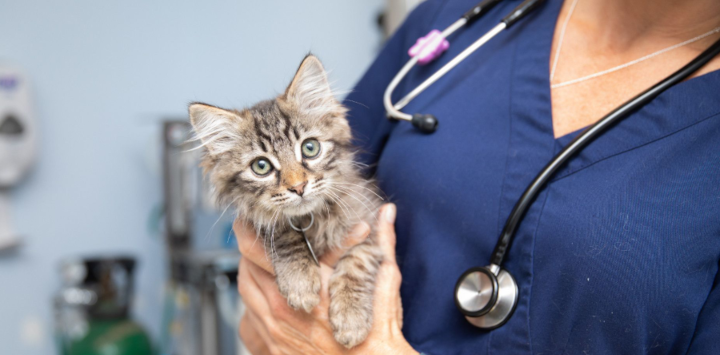
ASV releases updated Guidelines for Standards of Care in Animal Shelters
We also covered this topic in a recent episode of The Best Friends Podcast. Listen to that episode now.
The Association of Shelter Veterinarians (ASV) just released the second edition of the Guidelines for Standards of Care in Animal Shelters (“guidelines”). The guidelines were originally created in 2010 to provide a trustworthy resource for the housing, husbandry, medical, and behavioral care of animals living in animal shelters. Following an extensive review process, the guidelines have been updated to include expanded research and information in shelter veterinary medicine. ASV Executive Director Tom Van Winkle provided context for the changes upon release.
 “Since our founding, we’ve maintained the same dedication to establishing and advancing consistent care in animal shelters,” says Tom. “With the advancement of research and changes in shelter medicine, we knew it was time to update the guidelines to provide the best possible resource to shelters and veterinarians everywhere.”
“Since our founding, we’ve maintained the same dedication to establishing and advancing consistent care in animal shelters,” says Tom. “With the advancement of research and changes in shelter medicine, we knew it was time to update the guidelines to provide the best possible resource to shelters and veterinarians everywhere.”
The new publication is substantial – it runs 84 pages and touches on 13 arenas in animal sheltering practices – but for any shelter or rescue organization wanting to upgrade their practices, it’s required reading.
The big picture – an overview
The guidelines comprise evidence-based practices of use in any facility housing multiple animals and were developed from a consensus document created by 19 shelter veterinarians selected for their subject matter expertise. The resulting guidelines are designed to help shelters improve care of animals as well as being mindful of the health of their staff, volunteers, and community members. They also reflect the diversity and breadth of tasks shelter professionals encounter every day.
“The original guidelines were an important achievement and involved a lot of hard work by the first set of authors,” says Lena DeTar, DVM, DACVPM, DABVP-SMP, assistant clinical professor at Cornell University College of Veterinary Medicine. Dr. Lena also serves as interim director of the Maddie’s Shelter Medicine Program. “As with anything in science, we have been working to ask and answer questions about sheltering for the last 10 years since those guidelines came out. Everyone felt that it was time for an update that reflected new research, products, opportunities, and practices.”
The five domains model
A major change that shelters will note in the new guidelines is the shift from the traditional five freedoms model to a model called the five domains. While the new model takes its cues from the five freedoms, there are substantive differences.
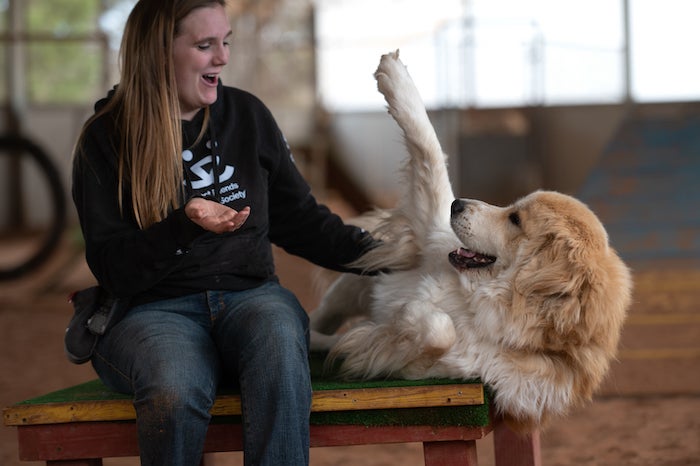 “While the five freedoms are valuable for defining essential elements of animal welfare, the focus is on avoiding negative experiences,” Dr. Lena says. “The five domains model illustrates how better or worse nutrition, environment, physical health, and behavioral opportunities combine to inform an animal’s mental state, which informs their overall welfare.”
“While the five freedoms are valuable for defining essential elements of animal welfare, the focus is on avoiding negative experiences,” Dr. Lena says. “The five domains model illustrates how better or worse nutrition, environment, physical health, and behavioral opportunities combine to inform an animal’s mental state, which informs their overall welfare.”
The new model provides a spectrum for each domain. For instance, instead of just focusing on the absence of pain, it includes the feelings of comfort and fitness. The five domains also illustrates that positive welfare states can still occur even when one or more important needs are not completely satisfied. As an example, the guidelines proposes that “a stray cat with a healing pelvic fracture on cage rest (restricted agency, pain) may still have an overall positive welfare state when appropriately treated and housed in an enriched foster home.” Conversely, negative mental states may arise if only four out of the fives needs are met: “A well-fed and physically healthy dog confined long-term to a kennel (restricted agency) may have profound mental distress and overall negative welfare.”
“The five freedoms were developed for farm animal and not companion animal welfare and are somewhat limiting,” says Sheila Segurson, DVM, DACVB, director of community solutions for Maddie’s Fund. “The five domains model was first created in 1994, and also focused on reducing animal welfare compromise for animals used in research, testing, and teaching. Since that time, the domains have been edited and expanded. We like that it's been developed for all animals and that it focuses on reducing negative and increasing positive welfare states. Living a good life is about positive experiences in addition to reducing negative ones.”
Primary subject areas
Though the new guidelines retain much of the same information about critically important issues in animal sheltering, they feature many new elements such as graphics and tables. As far as content goes, here are a few of the updates (along with a segment of the new information):
Expanded population management section with capacity for care calculations
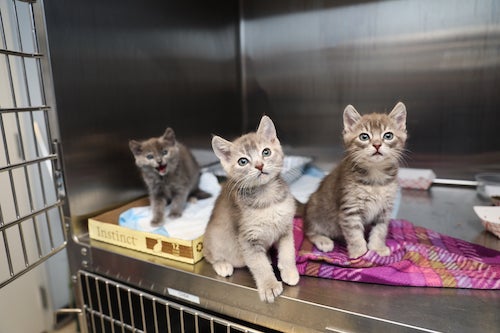 “Shelters should engage with one another to leverage resources and maximize each organization’s strengths. Thoughtful partnerships avoid redundancy and increase the community’s capacity to help animals. For example, a small organization with limited medical resources can partner with a larger organization with a full-service hospital, or a brick-and-mortar organization can partner with a foster-based organization to house animals with kennel-induced stress.”
“Shelters should engage with one another to leverage resources and maximize each organization’s strengths. Thoughtful partnerships avoid redundancy and increase the community’s capacity to help animals. For example, a small organization with limited medical resources can partner with a larger organization with a full-service hospital, or a brick-and-mortar organization can partner with a foster-based organization to house animals with kennel-induced stress.”
Best Friends resources on this topic can also be found here:
- Length of stay manual
- Animal flow training playbook
- How to build a strong partnership program spotlight
- Building partnership to maximize lifesaving podcast
Facility recommendations with helpful illustrations of enclosure set-up and size guidelines
Best Friends resources on this topic can also be found here:
Sanitation section promoting and highlighting spot cleaning
Best Friends resources on this topic can also be found here:
Updated, simplified vaccine guidelines specific for shelters
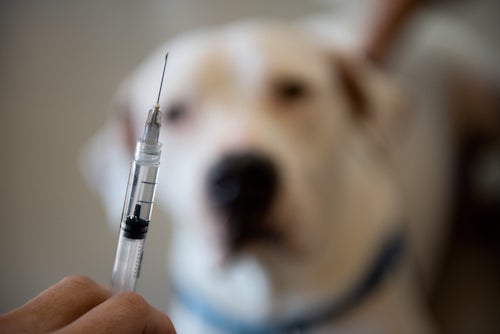 “It is not recommended to delay placement outcomes (e.g., adoption and transport) to allow response to vaccination or to receive a booster. The safer alternative is to secure an outcome with the recommendation that new caretakers continue a veterinary-directed vaccination protocol that reflects the animal’s new lifestyle and disease risks.”
“It is not recommended to delay placement outcomes (e.g., adoption and transport) to allow response to vaccination or to receive a booster. The safer alternative is to secure an outcome with the recommendation that new caretakers continue a veterinary-directed vaccination protocol that reflects the animal’s new lifestyle and disease risks.”
Best Friends resources on this topic can also be found here:
- Puppy protocol: deworming and vaccines
- Managing feline upper respiratory disease in shelters webinar
- Taming canine disease outbreaks in shelters program spotlight
Shelter surgery section that includes dentistry
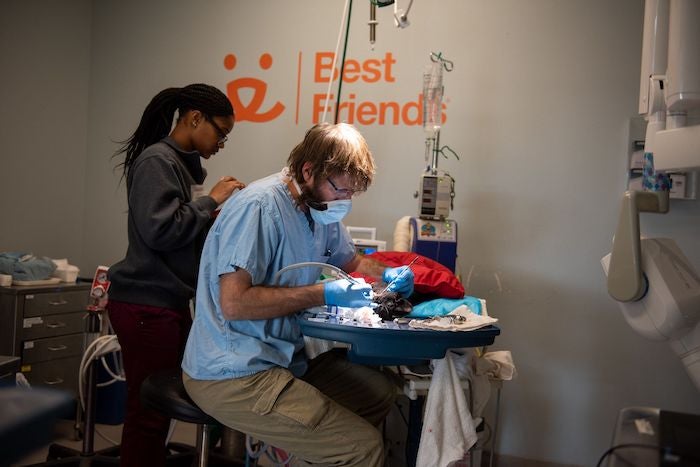
“Providing surgical dental services is an increasingly common part of shelter animal care, particularly for geriatric animals. Appropriate dental care considers individual patient health, surgical safety, and postoperative recovery needs including pain control, in the context of the shelter population. Medical records should document the dental exam, diagnostics, and treatments performed.”
Expanded recommendations for behavior assessments, which stress that behavior evaluation tests are not recommended
 “Over the past two decades, studies have shown that behavior evaluation tests fail to reliably predict future behavior, particularly aggression, in a new home. Performing one stressful subtest after the next can negatively impact test results and the animal’s emotional well-being. For example, it is unacceptable to expose cats to dogs in the shelter as a test to determine if the dog can safely live with cats because this poses a significant risk of emotional and physical harm to cats.”
“Over the past two decades, studies have shown that behavior evaluation tests fail to reliably predict future behavior, particularly aggression, in a new home. Performing one stressful subtest after the next can negatively impact test results and the animal’s emotional well-being. For example, it is unacceptable to expose cats to dogs in the shelter as a test to determine if the dog can safely live with cats because this poses a significant risk of emotional and physical harm to cats.”
New forensics section
This section covers laws and regulations; investigation policies; veterinary forensic evaluations; documentation; managing evidence; and training.
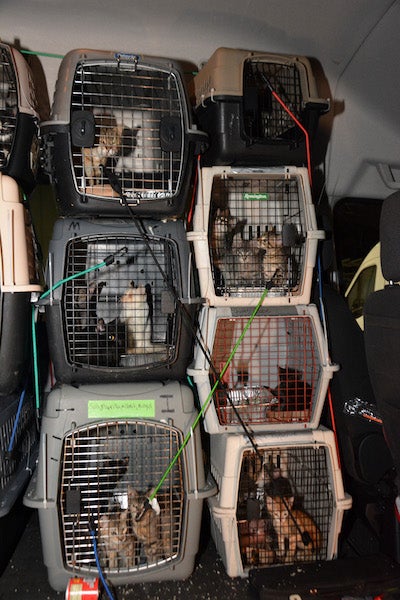 New disaster response section
New disaster response section
This section covers the four phases of disaster response:
- Mitigation: ongoing, preemptive activities that reduce the impacts of future disasters on animals, people, shelters, and communities.
- Preparedness: creating plans to handle specific disasters, training and conducting exercises or drills, and acquiring the resources needed to respond.
- Response: implementing the disaster plan and adapting as necessary during an event.
- Recovery: returning to some degree of normalcy in the period following a disaster, this period can last from days to years.
Best Friends resources on this topic can also be found here:
Public health section that includes shelter employee well-being
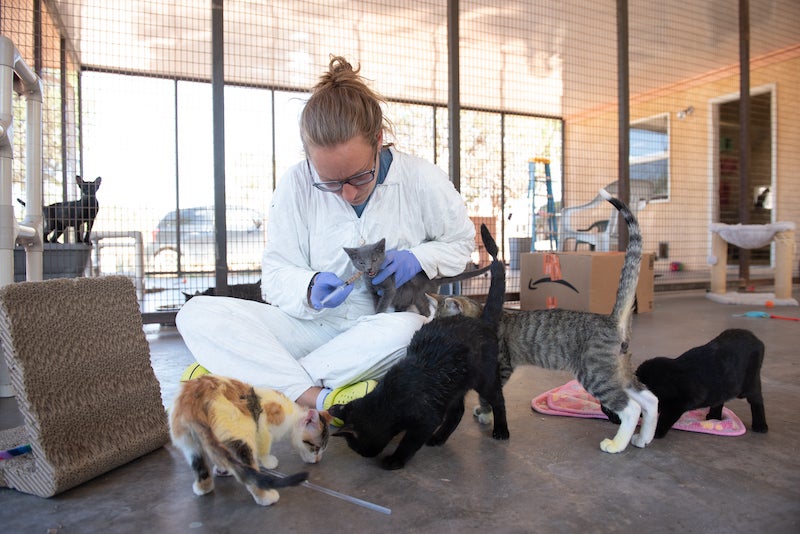
This section covers personal protective measures (hand hygiene), workplace hazards (chemical hazards; physical hazards such as noise exposure; biological hazards such as animal bites, human or animal rabies exposure; other zoonotic diseases; and antimicrobial resistance and emerging pathogens). It also covers issues pertaining to the well-being of shelter personnel, stressing that “[s]helters should strive to become workplaces that emphasize staff wellness through a positive organizational culture, fair pay, hours and expectations, provisions for self-care, and ready access to mental health support systems without repercussions.”
Best Friends resources on this topic can also be found here:
- Managing our mental health podcast
- When rescuers need rescuing program spotlight
- From surviving to thriving: an interview with José Ocaño
The authors are still working on a handy checklist tool (coming soon!) with about 550 key actionable statements from the guidelines.
“Like the last edition, this version is set up with key statements that use such terms as ideal, should, must, and unacceptable,” Dr. Lena says. “We encourage shelters to first ensure that all of the unacceptable guidelines are met, then move on to the musts, which indicate practices required for humane care. There are probably easier and cheaper guidelines that can and should be met quickly, but our hope is that shelter personnel can use the guidelines to justify the time and resources that meeting some of the other recommendations require.”
As for squeezing in enough time to thoroughly review the manual, Dr. Sheila highly recommends it.
“It's wonderful if people can read the whole guidelines, as the document is intended to be read in its entirety,” says Dr. Sheila. “That’s our first and foremost recommendation, though we understand everyone is busy. Start with the introduction, which provides important considerations as you read the guidelines. If you're looking for something specific, such as why the guidelines no longer recommend formal behavior evaluation tests for every shelter pet, go to the section where that topic is discussed, paying special attention to references that support the text.
“In implementing the guidelines, focus on making sure you're not doing anything that is 'unacceptable' and on implementing 'musts' first,” she adds. “Once you've accomplished this (congrats!), it's time to move on the 'shoulds' and 'ideals.’
And don’t let doing things perfectly stand in the way of doing things well. Any improvement to caring for animals will move our entire industry closer to being healthy and successful for everyone (dogs and cats included!) involved.

Liz Finch
Senior Writer
Best Friends Network
If you enjoyed this program spotlight, you can find our complete catalog of spotlights here.